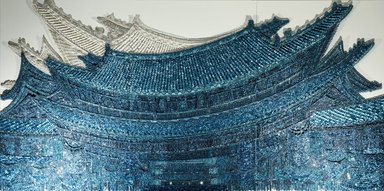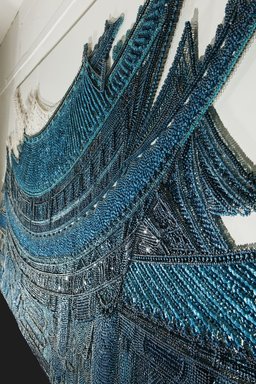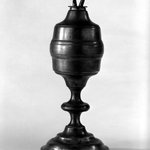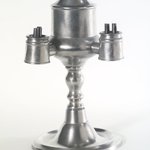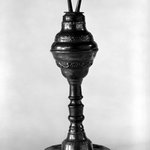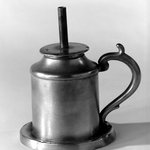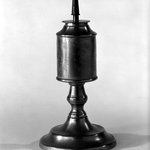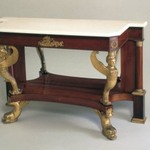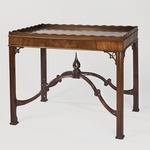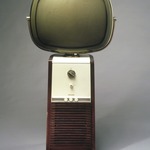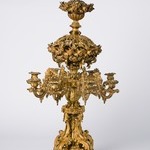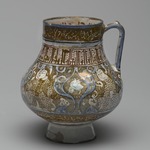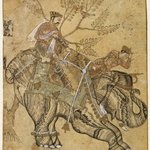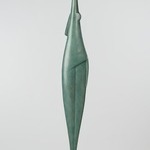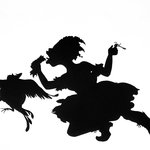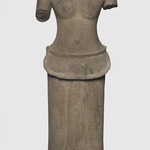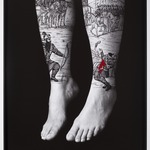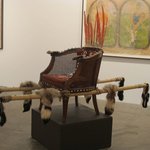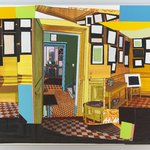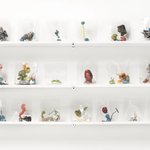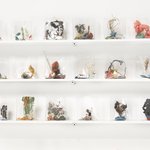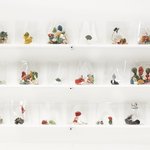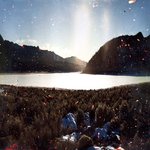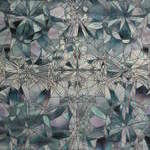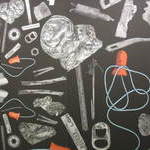¡Qué hermoso!
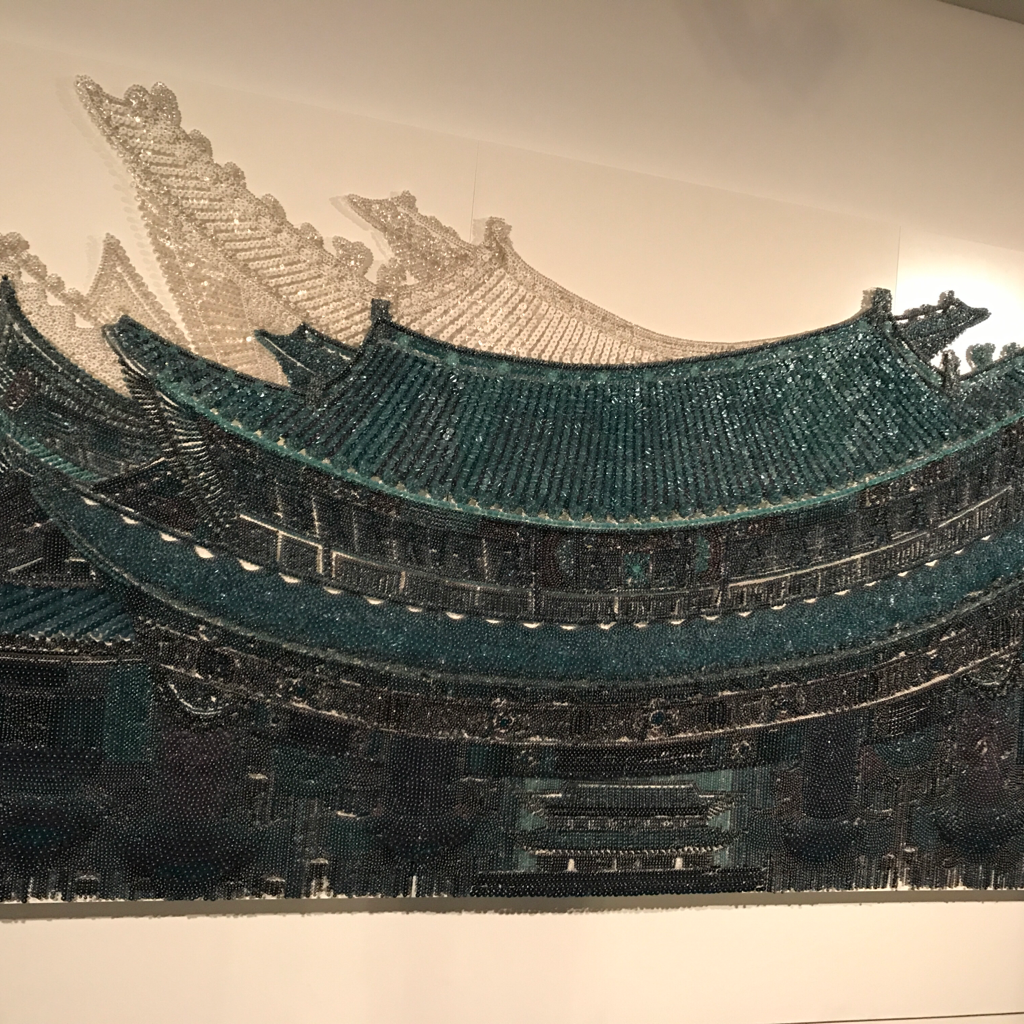
¡Es un obra hecho completamente por alfileres y botones! Representa los templos y palacios en Corea del Sur, los cuales se refieren al concepto de ilustración.
The button art in the infinite blue exhibition, do you know how long that took the artist to make? How many buttons on the piece? Thanks!
This took about 5 months to produce! She starts by digitally creating composite images from photographs.
Hwang then projects the image onto the wood panel and traces out the shape. She then hammers the pins with button onto the board. The process of hammering in each pin is mediative. She says it is "not unlike a monk engaged in Zen practice."
Wow, thank you!
You're welcome! It's an incredible artwork.
We were wondering if all the little beads in this work are flat or are some of them spherical?
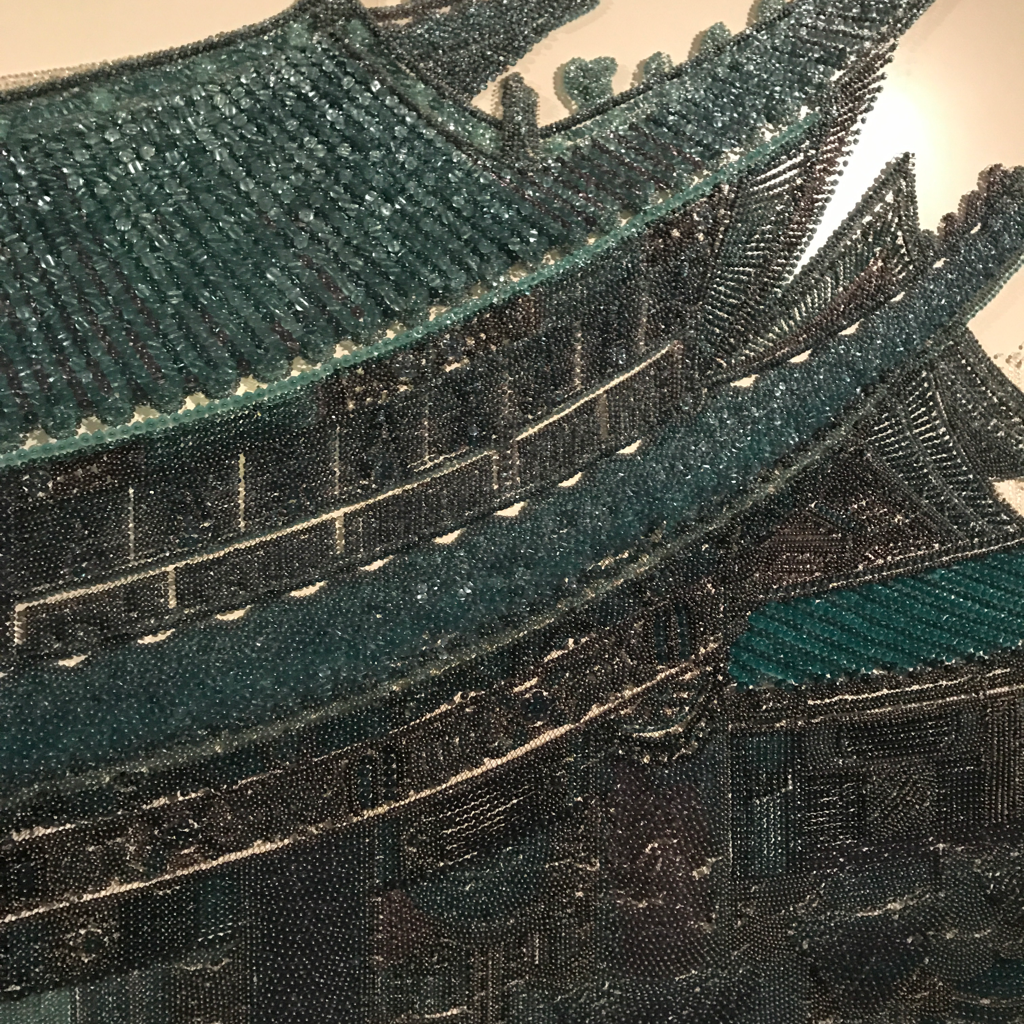
Those little disks are actually buttons!
Hwang developed this technique when she was working in an embroidery design studio that had piles of unused buttons.
For Hwang, buttons also reference the fashion industry. They both relate to generations of women sewing garments and to the current global fashion workforce, primarily women, many from Asia like herself.
I love it even more. Thank you!
I love this piece (but can’t imagine it is easy to transport or display). Does the artist always work with buttons?

Very often! Hwang began working with buttons in the late 1990s and 2000s while she was working for an embroidery design studio.
She encountered piles of unused buttons that were available for her to do with as she wished, so she started using them to create her artwork! They are now characteristic of her work.
Also, about the grand scale, you'll notice that the white panel in the back is separated into several sections which likely make it easier to deinstall and transport.
Tell me more.
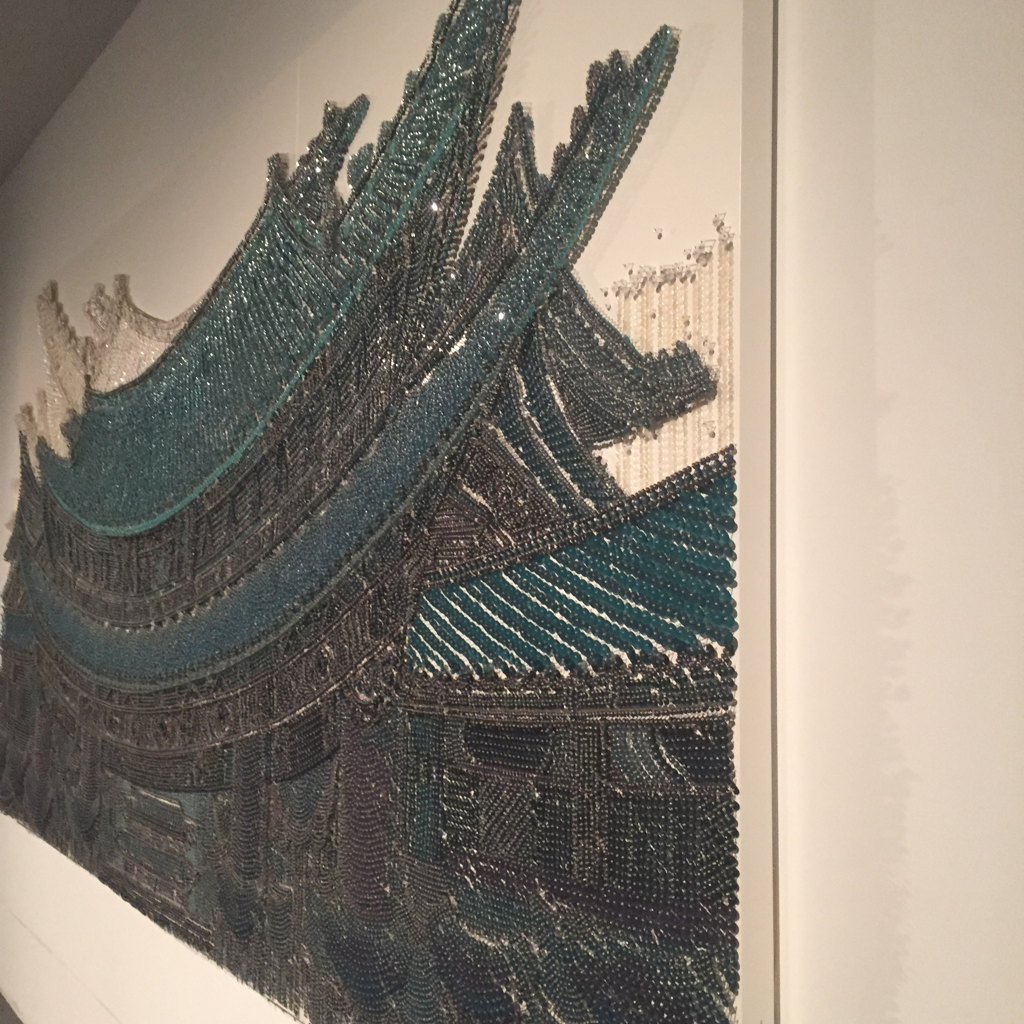
Made of pins and buttons, Ran Hwang's East Wind combines zen making with fashion materials.
The work is created from individual buttons threaded on needles that are then hammered into wood panel, a meticulous, repetitive, zen-like process on the part of the artist that is reflected in the temple structures in the work—a reference to enlightenment!
I'm interested in this art because it represents my home country, Korea. How is it made? It looks like it's created with buttons one by one.

You guessed correctly! The artist threaded buttons onto needles, which she then hammered into wood panels one by one to create this image.
For her, the processes of hammering the pins onto the board is meditative, not unlike a monk engaged in Zen practice.
The image itself is a composite of multiple temple and palace structures in South Korea. The building rests on a foundation of chandeliers holding candles. The candles and temples, along with her zen-like process, reference enlightenment.
Thank you so much!
Was the depth of the pins done on purpose? Because to get the pins in and out at different lengths must have taken a while, and you could destroy pieces of the art if it wasn’t done precisely!
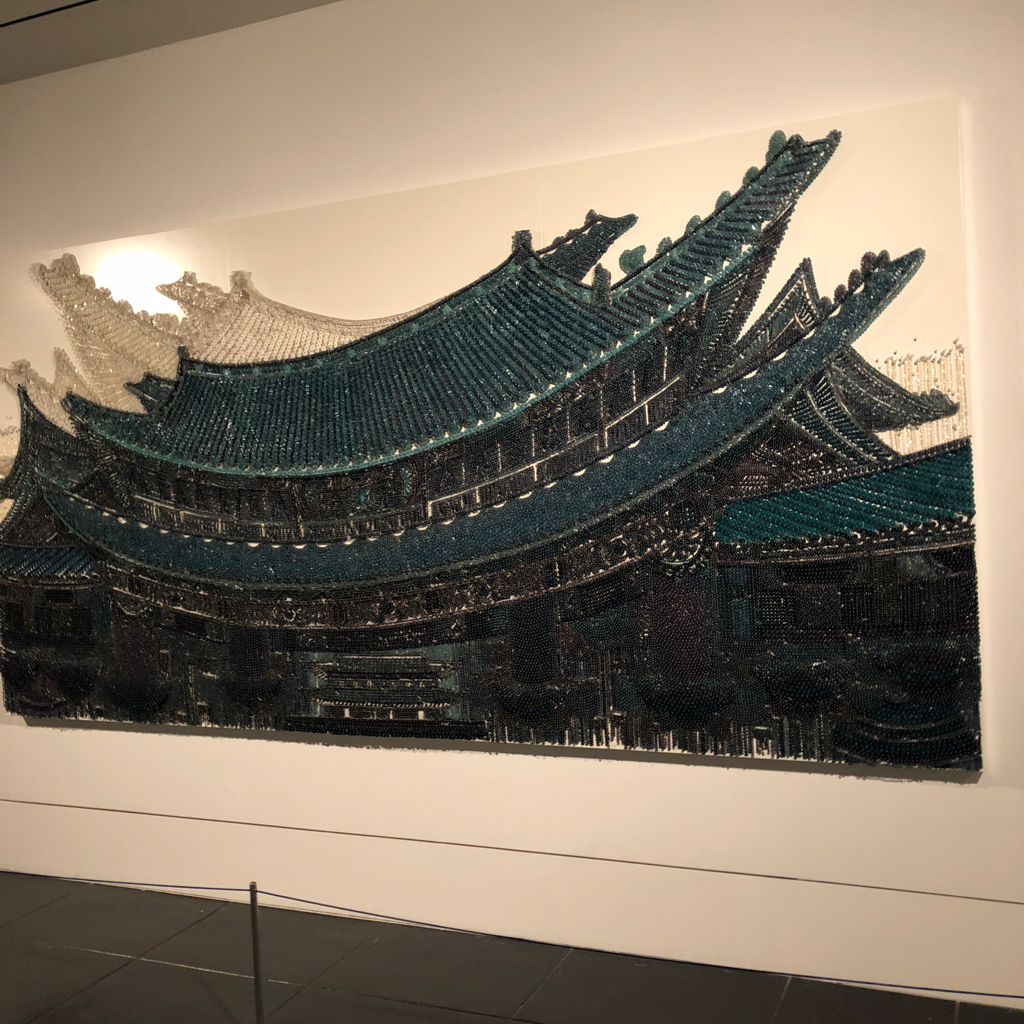
You’re quite right: it’s a long process to thread the buttons and beads onto pins and then hammer them one by one into the wood backing. Hwang says, “The process of producing large installations is time consuming and repetitive, requiring intense manual labor performed in a meditative state, hammering thousands of pins into a wall, not unlike a monk engaged in Zen practice.”
Why are they represented by different colors... would it have to do with wealth?
I don't think the colors are associated with wealth. The blue could relate to the cobalt used in blue-and-white Korean ceramics, or it could just be a color the artist likes. Her other "Palace Works" use other colors, such as white, green, and brown, as well as blue.
How do works like this get put up? Did this have to be constructed on site?
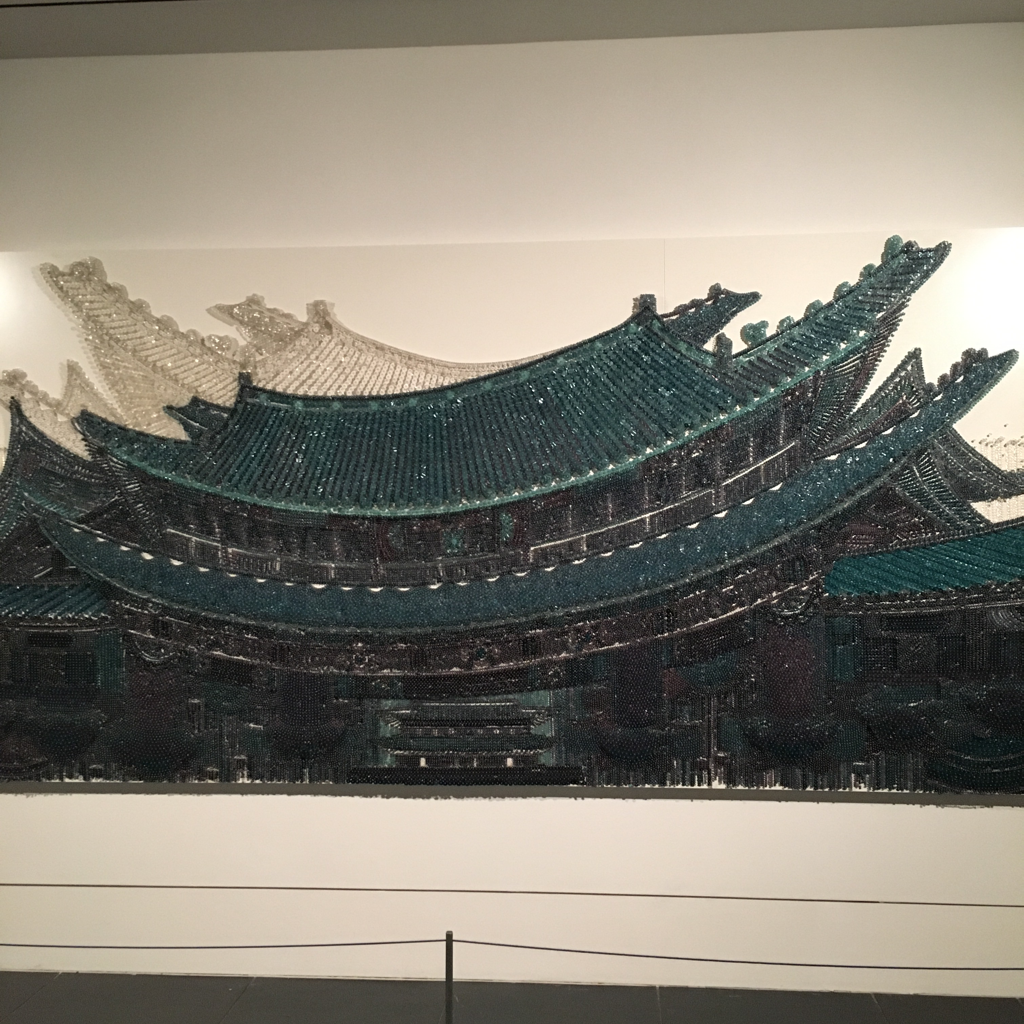
Good question! If you look closely, you'll notice that all of the buttons are pinned to a backing. That backing is part of the work itself and the whole thing can be moved as a unit.
Art handlers just have to be sure that there are large enough doors to get this huge piece through!
How long did East Wind by Ran Hwang take to complete?
Hwang's palace works like this one take around 5 months to complete.
Why did the artist use buttons, (instead of glass balls, pebbles, or bottle tops)?
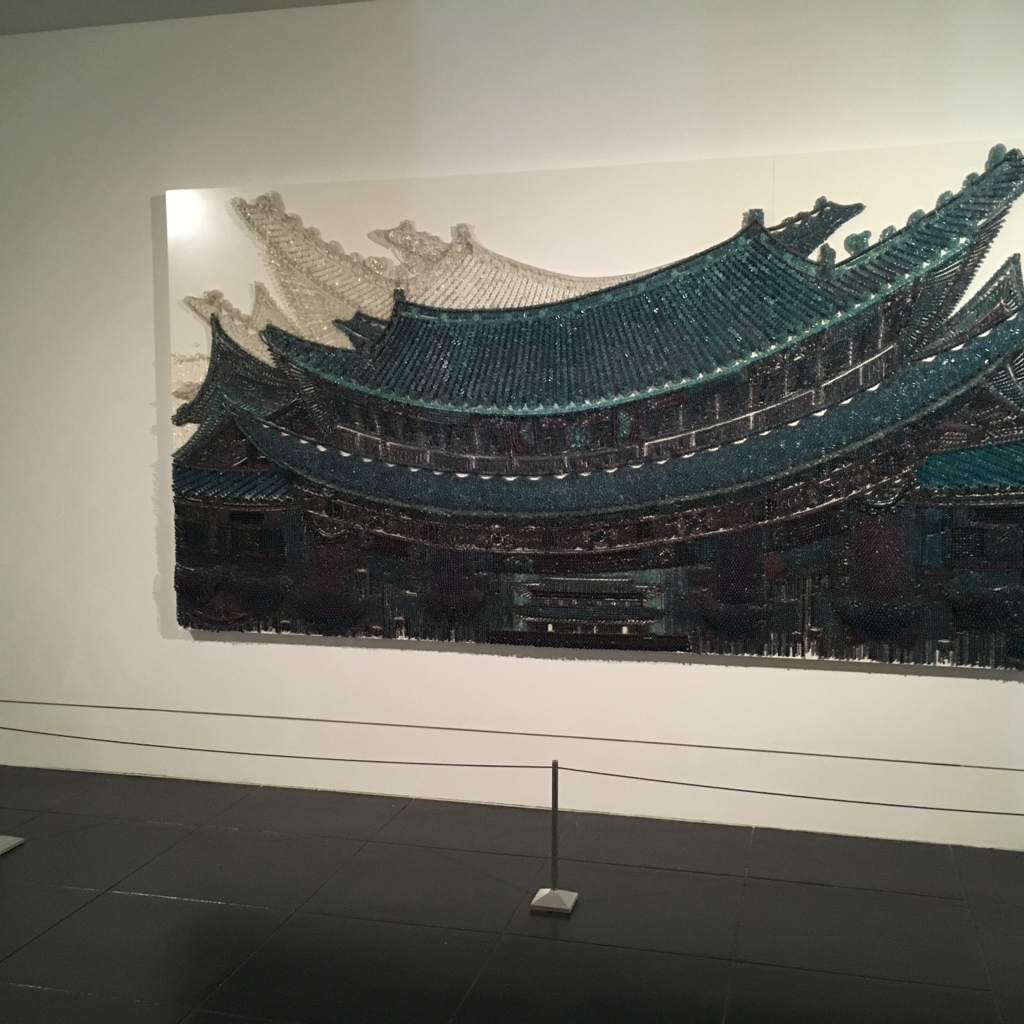
Hwang started using buttons to create her work in the early 2000s, responding in part to the availability of old buttons at her job in an embroidery studio in New York and in part to the way individual buttons could stand in for people and souls, a connection she made even more clearly after witnessing the events of 9/11. However, she does use other materials: if you look closely at this piece you may notice flat disks and some round beads mixed in as well.
Was the East Wind assembled at the museum?
It was not! Well, not completely anyway. You'll notice that there is a seam in the panel where the piece can be separated into two parts. We simply joined them together!
